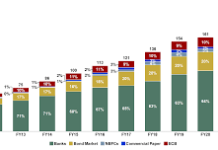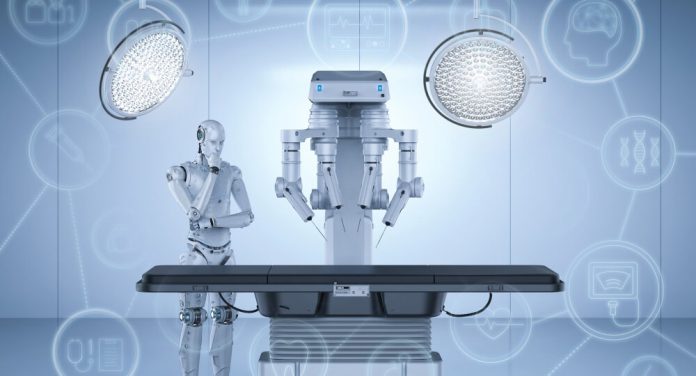The field of medical robotics is evolving rapidly, offering significant advancements that enhance the precision and efficiency of surgical procedures. From robotic-assisted surgeries to minimally invasive techniques, robotics is reshaping the landscape of healthcare.
Surgeons now have access to tools that not only increase the accuracy of their work but also offer patients quicker recovery times and fewer complications. These innovations are paving the way for more precise surgeries, revolutionizing patient care, and pushing the boundaries of what is possible in the operating room.
Understanding Medical Robotics and Robotic Surgery
Medical robotics refers to the use of robotic systems and machines in the medical field, particularly in surgery. These robots are designed to assist surgeons by offering enhanced precision, control, and minimally invasive capabilities.
While traditional surgery is still widely used, robotic-assisted procedures are becoming increasingly popular due to their numerous advantages, including reduced patient trauma and faster recovery times.
One of the most well-known forms of medical robotics is robotic surgery, where robotic systems are used to perform or assist in surgical tasks. These systems often consist of robotic arms controlled by a surgeon through a console, giving them a high degree of precision in delicate procedures.
The Rise of Precision Surgery in Medical Robotics
A key driver of robotic surgery’s growth is its ability to perform precision surgery. These robotic systems have advanced mechanisms that offer unparalleled control over surgical instruments, allowing for highly accurate movements.
This precision is especially critical in delicate surgeries, such as neurosurgery or cardiac surgery, where the smallest error can have significant consequences.
Robotic technology enhances surgery by enabling surgeons to operate on hard-to-reach areas, allowing for precise instrument manipulation and minimizing tissue damage and complications, resulting in shorter recovery times and less patient discomfort post-surgery.
Minimally Invasive Surgery: The Shift Toward Smaller Incisions
One of the most significant impacts of medical robotics is the move toward minimally invasive surgery (MIS). Traditional surgeries often require large incisions, leading to longer recovery periods, more postoperative pain, and a higher risk of infection. Robotic-assisted surgeries, on the other hand, typically require only small incisions, which significantly reduces trauma to the body.
By using robotic systems with high-definition cameras and precise instruments, surgeons can perform these complex procedures with minimal disruption to the body. This leads to smaller scars, less bleeding, and shorter hospital stays. For patients, this means faster recovery and less risk of complications, which is why MIS procedures are rapidly gaining popularity.
Robotic-Assisted Procedures: A New Era in Surgery
Robotic-assisted procedures have transformed the way surgeons perform operations. The use of robots in surgical practices provides several benefits:
- Enhanced Precision: Robotic systems enable surgeons to operate with greater accuracy, especially in complex surgeries where precision is critical.
- Improved Dexterity: The robotic arms used in surgery can move in ways that human hands cannot, allowing for more refined and controlled movements.
- Better Visualization: Robotic systems often include high-definition 3D cameras, providing surgeons with an enhanced view of the surgical site.
- Reduced Human Error: Robots can help minimize the risk of human error, providing greater consistency in the surgical process.
These advantages have led to the use of robotics in a wide range of surgical fields, including urology, gynecology, orthopedics, and cardiology.
The Role of AI and Machine Learning in Robotic Surgery
As robotics continues to evolve, the integration of artificial intelligence (AI) and machine learning (ML) is becoming increasingly important in robotic-assisted surgeries. These technologies allow robotic systems to continuously learn from past surgeries, improving their efficiency and decision-making over time.
AI-powered robotic systems can also provide real-time data and analytics to surgeons, helping them make more informed decisions during procedures. For example, AI can be used to analyze medical imaging, predict surgical outcomes, and assist in planning the most effective approach for a given procedure.
With AI, robotic systems can enhance the accuracy and success rates of surgeries, creating more personalized and efficient treatment plans for patients. As these technologies advance, the potential for robotic surgery to become more autonomous and smarter will continue to grow, making it an even more invaluable tool in modern healthcare.
Healthcare Technology and the Future of Surgery
The ongoing advancements in healthcare technology have paved the way for the next generation of medical robotics. From robotic-assisted joint replacements to AI-driven diagnostic tools, the future of surgery is becoming increasingly automated and connected. This shift towards automation is not only improving surgical outcomes but also transforming the entire healthcare system.
In addition to precision and efficiency, robotic systems are also contributing to the expansion of telemedicine. Surgeons can now perform procedures remotely using robotic systems controlled over long distances. This is especially beneficial for patients in rural or underserved areas who may not have easy access to specialized care.
Training Surgeons for Robotic Surgery
As medical robotics becomes more prevalent, it is essential for healthcare professionals to adapt to new technologies. Surgeons must be trained to use robotic systems effectively, which involves learning how to operate robotic arms, interpret high-definition imagery, and integrate AI into the surgical process.
Medical schools and hospitals are increasingly offering specialized training programs to help surgeons develop the skills necessary to operate in this new landscape. These programs often include hands-on training with robotic systems, along with virtual simulations to prepare surgeons for real-life surgeries.
The Benefits of Medical Robotics for Patients
The integration of medical robotics into surgical practice has numerous benefits for patients, including:
- Faster Recovery: Minimally invasive robotic procedures typically result in quicker recovery times compared to traditional surgeries.
- Reduced Complications: With more precise and controlled movements, there is less risk of complications such as infections or blood loss.
- Shorter Hospital Stays: Patients undergoing robotic-assisted procedures often experience shorter hospital stays and can return to their normal activities more quickly.
- Smaller Incisions: Smaller incisions result in less scarring and reduced post-surgical pain.
Challenges and Considerations
Despite the numerous advantages, there are challenges to integrating robotic surgery into mainstream healthcare. The high cost of robotic systems and the need for specialized training for surgeons are significant barriers. Additionally, there are concerns about the potential for technology failure during procedures.
Nevertheless, as technology advances and becomes more widely adopted, these challenges are likely to diminish, paving the way for more cost-effective and efficient solutions in the future.
Conclusion
The emerging trends in medical robotics are reshaping the world of surgery by offering enhanced precision, efficiency, and minimally invasive techniques. From robotic-assisted procedures to the integration of AI and machine learning, the future of surgery looks brighter than ever.
As medical robotics continues to evolve, it is clear that it will play a critical role in improving surgical outcomes, reducing patient recovery times, and advancing healthcare technology. With continued innovation, we are poised to witness a revolution in the way surgeries are performed, ultimately leading to better patient care and outcomes.
I hope you find the above content helpful. For more such informative content, please visit Medtechreporter.











